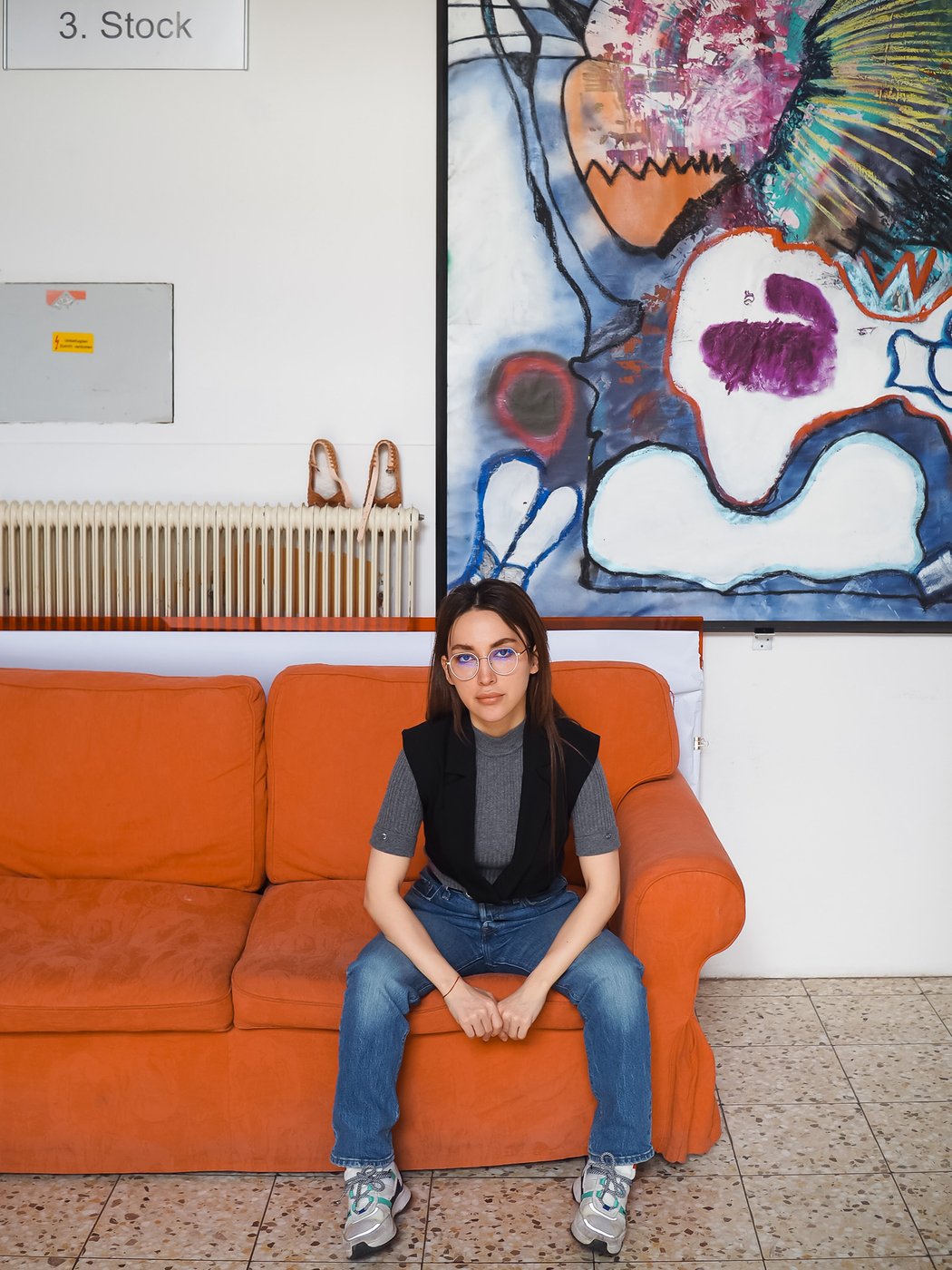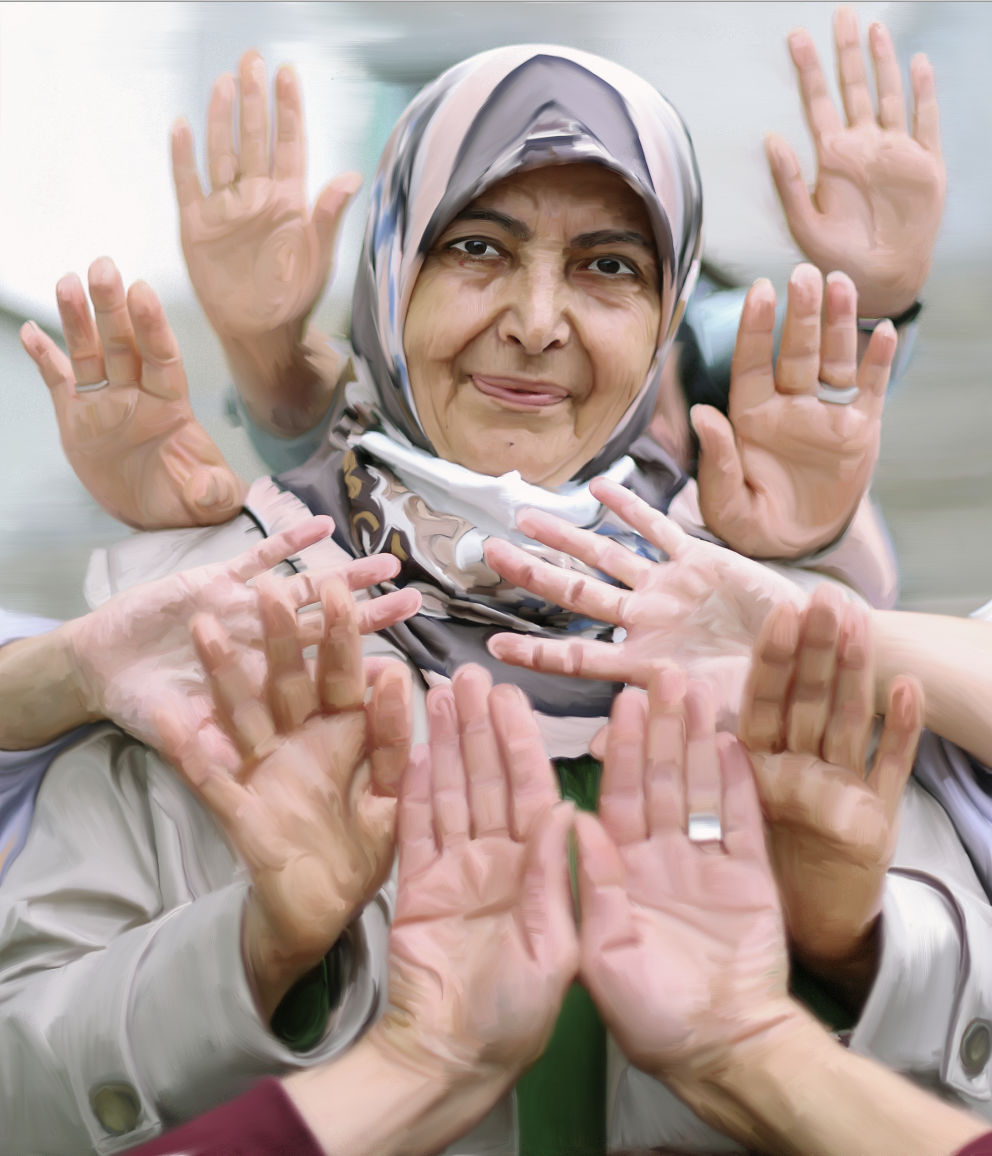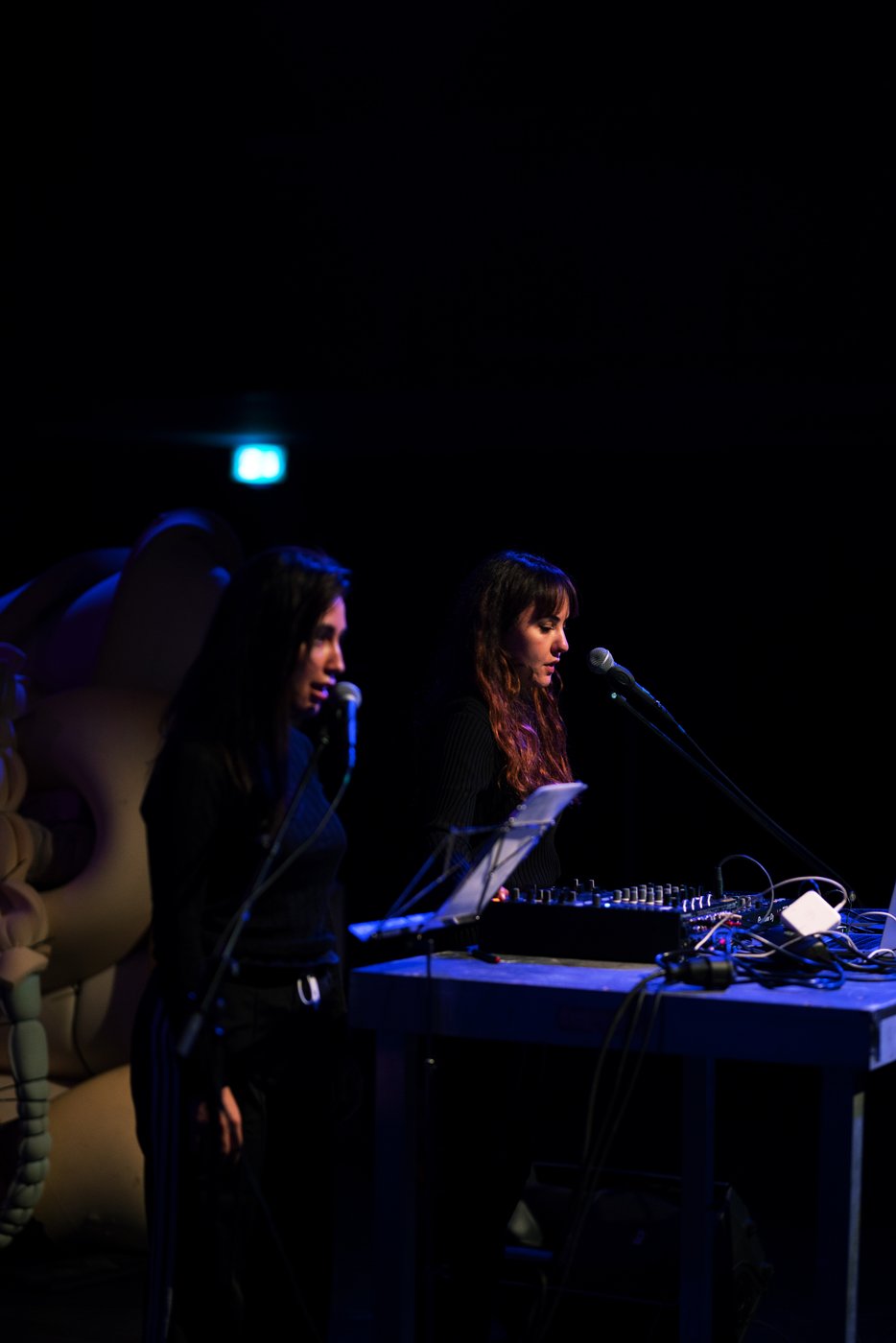Betül Seyma Küpeli
In conversation with Barbara Pflanzner, Academy Studio Program, Creative Cluster, April 4, 2024.
You have a background in various fields – as an architect, visual artist, musician, Pilates instructor, and cultural worker. To what extent are these different activities interrelated in your artistic practice?
Good question. I don’t really practice architecture in the classical sense anymore. Although I studied it, I’ve hardly ever practiced it. I have always been involved in cultural work, or rather it has always been part of my practice, and at the same time, it also allows me to not stray too far from art to earn a good income.
In your thesis for your architecture degree, you dealt with the topic of refugee policy and spatial strategies in Austria. How do socio-political issues play a role in your artistic work?
Quite strongly, actually. Especially social diagnoses and cultural analyses. I’ve worked a lot in collectives and have been active in various diasporas. Socio-political questions are always part of my work, actually part of my identity. I myself am Kurdish from Turkey and was raised with an early sensitivity to political issues, which has an impact on my artistic work.
You addressed the topics mentioned in the project Solid Bodies, Soft Machines, which was presented as part of the Festival der Regionen in 2021. What exactly is this project about?
Solid Bodies, Soft Machines deals with the Lodenfrey textile factory in Bad Ischl, a Munich-based company that produced traditional clothing. The factory no longer exists today; the site was abandoned in the 1990s because production became too expensive and was relocated to Romania and Hungary. I wanted to talk to the former textile workers about this time and also conduct a kind of archival work. I spent almost a year there, did a lot of relationship-building, and met some wonderful women from former Yugoslavia, Turkey, as well as from Austria. Many of the women lived with their families in housing provided by the factory and some are still living there. Through this project, they felt represented and visible for the first time.
After the closure of the Lodenfrey factory, they were suddenly unemployed overnight. In Bad Ischl, there aren’t many other options. When this affects entire families and generations – I met one family in which everyone worked at the Lodenfrey factory – it’s quite sad. In the conversations, it often revolved around mechanical work, specific choreographies, specific processes. So, I quickly realized that I didn’t just want to portray the individuals but wanted to address the relationship between machine and human or humans as an extension or prosthesis of the machines. It was important for me to show that it’s much more than just a migration story.
The work was intended as the starting point for a long-term establishment of a migration archive in the Salzkammergut, what’s the current status of the project?
Yes, the idea was to continue this archive. Bad Ischl is also the European Capital of Culture this year, but unfortunately, nothing came of it. Through a woman I am still in touch with, I know that the women still occasionally come together at a youth center.
Together with your colleague Seba Kayan, you’re pursuing a music project in which you combine art and music, traditional and contemporary sounds. What can you tell us about this collaboration?
This music project was actually a form of archival work as well. Seba Kayan is a DJ and comes from techno music. We met through a WIENWOCHE project for which I had invited her as a curator. Besides techno, she has also worked a lot with Kurdish sounds, and together we were looking for old Kurdish music, to which I sang in Kurdish. In that sense, the project was also part of my identity development. We were invited to festivals and did some pretty cool projects together.
You also wanted to use your space to focus more on music. Have you managed to do that?
I have only succeeded a bit with that. Unfortunately, I don‘t have much time for that right now. I’m more focused on the film I’m currently working on, the short film Gia. I will also compose the music for it with a friend. So, there’s still more to come.
Wha’s this short film about?
It’s about the so-called grind culture or hustle culture. These are topics that I’ve been working on for almost two years and which I want to continue working on. It‘s about the “culture of overwork” or the overworked society. I started to do Pilates early on, then began working as a Pilates instructor myself, and have always been interested in biohacking and the question of how to best utilize one’s potential, both physically and mentally. But I quickly realized that it was wearing me out – always wanting to be better can also make you very unhappy. That’s a whole world of its own. The film documents the duality between the intention to live well and to fully use one’s potential while being stressed by it, and how this self-optimization then evolves in a completely different direction, as well as the time when I was going to a lot of therapy and doing bodywork.
What are your plans for the near future?
I’m trying to finish this project soon. I’m currently considering turning it into a trilogy. Gia is something of an avatar; there are several of her, such as The (holistic) Gia or The (athletic) Gia. In any case, I already know what my second film will look like.

![Betül Seyma Küpeli_Meditation, 2023, Filmstill The [holistic] Gia](https://webportal-live.akbild.ac.at/en/university/Graduates/academy-studio-program/interview-scholars/betul-seyma-kupeli/betul-seyma-kupeli_meditation-2023-filmstil-the-holistic-gia.png/@@images/image-1400-a36a0c8a7ccf5062b85755faf0277ba4.png)
![Betül Seyma Küpeli_Gia, 2023, Filmstill The [holistic] Gia](https://webportal-live.akbild.ac.at/en/university/Graduates/academy-studio-program/interview-scholars/betul-seyma-kupeli/betul-sema-kupeli_gia-2023-filmstil-the-holistic-gia.jpeg/@@images/image-1400-b0eac5defc9cec9c542dc8addc70b75a.jpeg)
![Betül Seyma Küpeli_Somatic Bodywork, 2023, Filmstill The [holistic] Gia](https://webportal-live.akbild.ac.at/en/university/Graduates/academy-studio-program/interview-scholars/betul-seyma-kupeli/betul-seyma-kupeli_somatic-bodywork-2023-filmstil-the-holistic-gia.png/@@images/image-1400-c5562b2c5a7aa728e20ad8fddeb2fdef.png)

